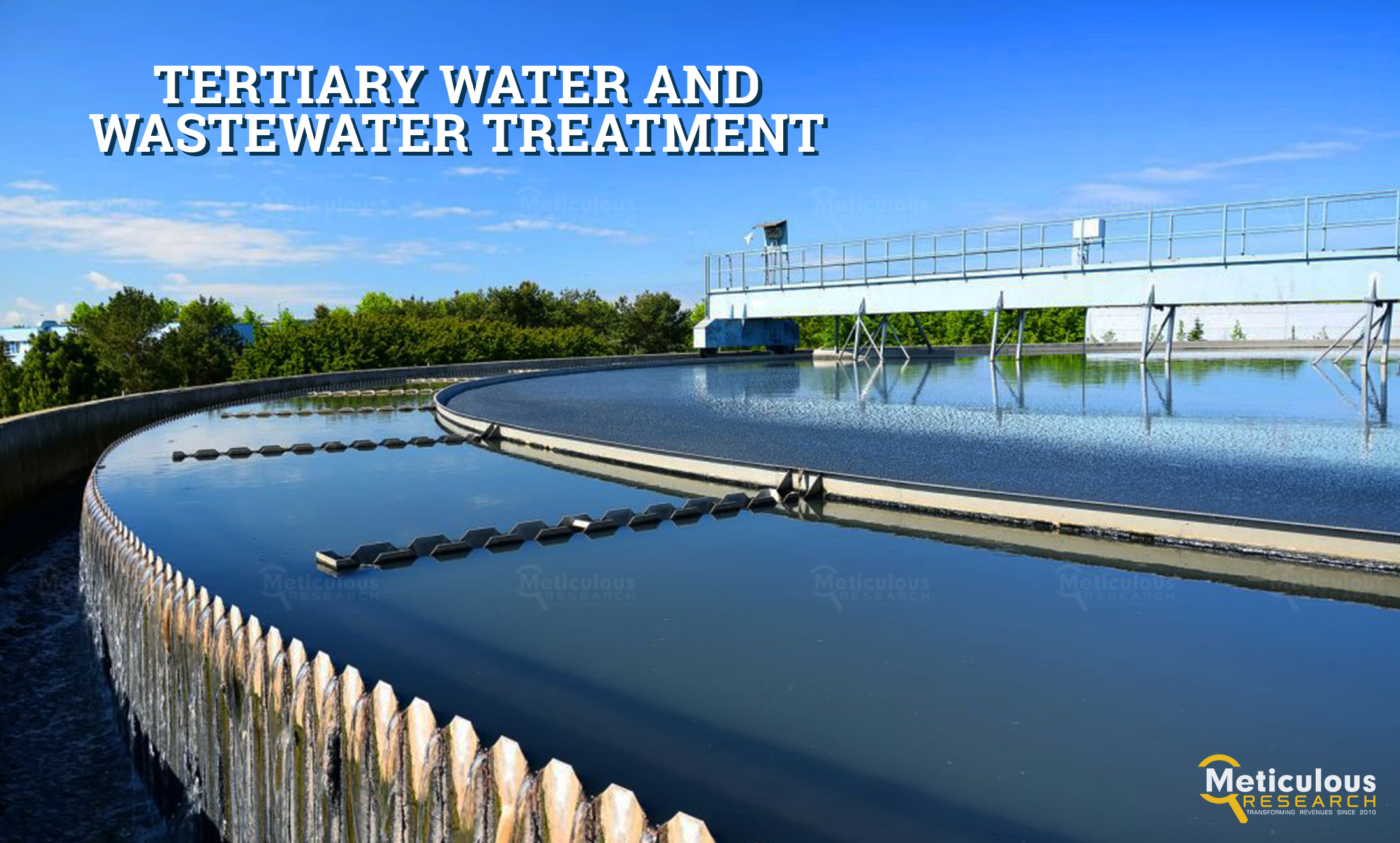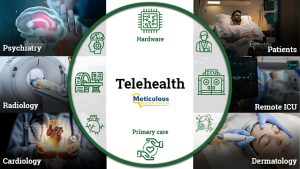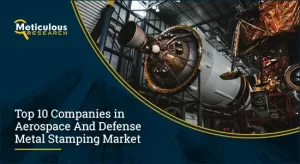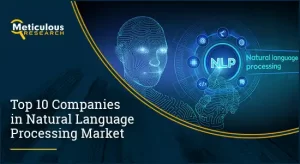
The world is facing an unprecedented freshwater crisis, a challenge that increasingly threatens economic growth, water security, and the health of ecosystems globally. The growing pressures of climate change, economic expansion, and industrialization have exacerbated this crisis, leading to the depletion of clean water sources and severe pollution of natural water bodies. Governments, industries, and environmental agencies are grappling with the escalating challenge of securing safe, potable water for human consumption while managing the industrial wastewater generated by sectors across the globe.
Download FREE PDF Brochure of Tertiary Water and Wastewater Treatment Technologies Market Market :- https://www.meticulousresearch.com/download-sample-report/cp_id=5185
As water demand soars, both the public and private sectors are consuming vast amounts of freshwater while simultaneously producing wastewater at alarming levels. If left untreated or poorly managed, this wastewater can have devastating consequences on aquatic ecosystems, human health, and biodiversity. The unchecked discharge of pollutants into rivers, lakes, and oceans creates a vicious cycle of contamination, further diminishing the availability of clean water. Thus, the recovery and reuse of wastewater have become critical solutions in managing global water resources, and Zero Liquid Discharge (ZLD) has emerged as a promising technology to address this growing concern.
The Water Scarcity Crisis: Challenges and Consequences
Water is an indispensable resource for human survival and economic development. However, the global water supply is under increasing pressure due to rising populations, urbanization, industrial activities, and agricultural expansion. According to a recent report by the United Nations, more than two billion people worldwide currently live in countries experiencing high water stress, and this number is expected to rise as climate change exacerbates droughts and alters precipitation patterns.
Freshwater scarcity is not just a developing-world issue—it affects countries in every region. The pressure on water systems is expected to increase dramatically as the global population grows and the demand for water in agriculture, manufacturing, and urban living intensifies. Furthermore, industrial activities—especially in sectors like power generation, chemical production, textile manufacturing, and mining—require substantial amounts of water and generate large volumes of wastewater. When this wastewater is inadequately treated, it poses a significant risk to the environment, leading to contamination of freshwater bodies and ecosystems.
In many regions, the lack of access to clean, reliable drinking water is compounded by the increasing prevalence of water pollution. Industrial wastewater, when discharged untreated or partially treated, introduces harmful chemicals, heavy metals, and other toxins into natural water systems, jeopardizing public health and ecosystem integrity. In this context, the need for sustainable water management solutions has never been more urgent.
The Role of Zero Liquid Discharge (ZLD) in Sustainable Water Management
In the quest for innovative water conservation and pollution control methods, Zero Liquid Discharge (ZLD) has emerged as a critical technology for industries worldwide. ZLD is a wastewater management system designed to eliminate all liquid waste from a facility, ensuring that no liquid effluent is discharged into the environment. Instead, ZLD systems treat and recycle wastewater, converting it into purified water suitable for reuse within industrial processes.
The core principle of ZLD is to minimize the environmental impact of industrial wastewater by closing the loop on water usage. By implementing advanced filtration, evaporation, and crystallization technologies, ZLD systems not only reduce the volume of wastewater but also recover valuable resources such as salts, minerals, and other by-products that can be reused or sold. This approach transforms wastewater from an environmental liability into a potential asset for industries.
Get Insightful Data On Regions, Market Segments, Customer Landscape, And Top Companies (Charts, Tables, Figures And More) :- https://www.meticulousresearch.com/request-sample-report/cp_id=5185
ZLD systems are particularly effective in addressing the challenges of water scarcity and industrial pollution. By recycling water onsite, industries can significantly reduce their freshwater intake, alleviating pressure on local water resources. Moreover, ZLD helps companies meet stringent environmental regulations by preventing the discharge of harmful pollutants into waterways, thus reducing the risk of contamination and enhancing the overall sustainability of their operations.
The Economic and Environmental Benefits of ZLD Technology
The adoption of ZLD systems offers several compelling benefits for industries and the environment alike. From an economic perspective, ZLD reduces the cost associated with water acquisition, waste disposal, and regulatory compliance. By recycling water onsite, companies can reduce their dependence on external water sources, lowering water procurement costs and reducing their vulnerability to water shortages. Furthermore, the recovery of valuable by-products from wastewater can create new revenue streams for businesses, making ZLD an economically attractive option.
Environmentally, ZLD technology has a profound impact on reducing industrial pollution and conserving water resources. By eliminating the discharge of liquid waste, ZLD prevents the contamination of rivers, lakes, and groundwater systems, thus protecting aquatic ecosystems and biodiversity. The technology also reduces the greenhouse gas emissions associated with transporting wastewater for offsite disposal, contributing to the fight against climate change.
One of the key advantages of ZLD is its ability to recover valuable materials from wastewater. Many industries generate wastewater containing salts, chemicals, and minerals that can be recovered and reused. For example, in the chemical and pharmaceutical sectors, ZLD systems can recover ammonium sulfate, which can be used as a fertilizer, or sodium chloride, which can be repurposed for industrial applications such as ice melting. These resource recovery capabilities not only reduce waste but also provide economic benefits to industries.
Driving Factors Behind the Adoption of ZLD Technology
The growing adoption of ZLD systems is being driven by a combination of regulatory, environmental, and economic factors. Governments and environmental agencies around the world are implementing stricter regulations governing water discharge and reuse in response to the escalating water crisis and the environmental impact of industrial activities. Agencies such as the U.S. Environmental Protection Agency (EPA), the European Water Association, and the India Water Works Association have introduced stringent water discharge standards that industries must comply with, prompting many companies to adopt ZLD as a solution to meet regulatory requirements.
In countries like China and India, ZLD technology is increasingly being mandated in certain industrial sectors to curb water pollution and conserve water resources. In China, the government’s 12th Five-Year Plan, which focuses on environmental protection and sustainable development, requires ZLD implementation in coal-fired power plants, chemical refineries, and other high-polluting industries. Similarly, in India, ZLD is mandated across a range of sectors, including pharmaceuticals, textiles, and food processing, to prevent the discharge of harmful pollutants into water bodies.
Discover More About Market Segmentation And Geographic Forecasts By Accessing The Full [PDF] Sample Research Report – CLICK HERE
Water scarcity and rising water costs are also significant drivers of ZLD adoption. As water becomes an increasingly valuable and scarce resource, industries are seeking ways to reduce their water consumption and minimize their environmental footprint. ZLD enables companies to recycle water onsite, reducing their reliance on external water sources and ensuring a stable water supply for their operations. This is particularly important in regions experiencing droughts or water shortages, where the availability of freshwater is limited.
The rising cost of wastewater disposal is another factor encouraging the adoption of ZLD systems. Traditional methods of wastewater treatment and disposal can be costly, especially in regions with strict environmental regulations. ZLD offers a cost-effective alternative by eliminating the need for offsite wastewater disposal and reducing the overall volume of waste generated.
Innovations in ZLD Desalination and the Future of Wastewater Management
In recent years, advancements in ZLD technology have expanded its applications and increased its efficiency, particularly in the field of desalination. ZLD desalination has gained significant attention as a promising strategy for managing brine waste from desalination plants, which are used to convert seawater into potable water. Traditional desalination processes generate large volumes of brine—a highly concentrated salt solution—that must be disposed of, often by discharging it back into the ocean, where it can harm marine life.
ZLD desalination offers a sustainable solution to this problem by recovering water from brine and reducing the volume of waste produced. By applying advanced evaporation and crystallization technologies, ZLD desalination systems can convert brine into purified water and recover valuable salts and minerals for reuse. This approach not only enhances water usage efficiency but also mitigates the environmental impact of brine discharges.
The increasing interest in ZLD desalination is expected to drive further innovations in wastewater management technologies. As industries and governments continue to seek sustainable solutions to water scarcity and pollution, ZLD is likely to play a central role in the future of wastewater treatment.
Get A Glimpse Inside: Request Sample Pages – https://www.meticulousresearch.com/request-sample-report/cp_id=5185
Global Market Trends and Growth Outlook for ZLD Technology
The demand for ZLD systems is expected to grow significantly in the coming years as industries and governments prioritize sustainable water management solutions. According to recent market research, the Tertiary Water and Wastewater Treatment Technologies Market is projected to reach $67.3 billion by 2031, at a CAGR of 18.4% from 2024 to 2031.
Several factors are contributing to this growth, including the increasing need for water conservation, stricter environmental regulations, and the rising cost of water and wastewater disposal. Industries such as power generation, chemicals, textiles, pharmaceuticals, and food processing are expected to be the primary drivers of ZLD adoption, as these sectors are highly water-intensive and generate large volumes of wastewater.
Conclusion: A Path Toward Sustainable Water Use
The global water crisis presents a formidable challenge to industries, governments, and communities around the world. However, technologies like Zero Liquid Discharge offer a promising path toward sustainable water use and pollution prevention. By enabling the recycling of wastewater, reducing environmental pollution, and recovering valuable resources, ZLD technology not only addresses the pressing issue of water scarcity but also helps industries achieve greater environmental and economic sustainability. As the demand for clean water continues to rise, the role of ZLD in wastewater management will become increasingly important in ensuring a sustainable future for all.
Immediate Delivery Available | BUY THIS RESEARCH REPORT (Insights, Charts, Tables, Figures and More) – https://www.meticulousresearch.com/Checkout/29290315
Tertiary Water and Wastewater Treatment Technologies Market Report Summary:
| Particular | Details |
| Number of Pages | 300 |
| Format | |
| Forecast Period | 2024-2031 |
| Base Year | 2023 |
| CAGR | 18.4% |
| Estimated Market Size (Value) | $67.3 billion by 2031 |
Related Market Reports:-
Biological Wastewater Treatment Market by Process (Aerobic Wastewater Treatment, Anaerobic Wastewater Treatment, and Anoxic Treatment), End User (Municipal, Industrial [Food & Beverage, Pulp & Paper]), and Geography – Global Forecast to 2030
https://www.meticulousresearch.com/product/biological-wastewater-treatment-market-5426
The Water and Wastewater Treatment Market is expected to reach $1,024.8 billion by 2033, at a CAGR of 5.9% from 2024 to 2033.
https://www.meticulousresearch.com/product/water-and-wastewater-treatment-market-5026
The Laboratory Water Purification System Market is projected to reach $10 billion by 2030, at a CAGR of 9.1% from 2024 to 2030.
https://www.meticulousresearch.com/product/laboratory-water-purification-system-market-5430
Water Purifier Market Size, Share, Forecast, & Trends Analysis by Technology (RO, UF, UV, Activated Carbon, Ozone, NF), Portability, Distribution Channel (Online, Offline), Industrial, Residential, Commercial, Public Sector) – Global Forecast to 2031
https://www.meticulousresearch.com/product/water-purifier-market-5845
Contact:
Meticulous Market Research Pvt. Ltd.
1267 Willis St, Ste 200 Redding,
California, 96001, U.S.
USA: +1-646-781-8004
Europe: +44-203-868-8738
APAC: +91 744-7780008
Email– sales@meticulousresearch.com
Visit Our Website: https://www.meticulousresearch.com/
Connect with us on LinkedIn- https://www.linkedin.com/company/meticulous-research
Meticulousblog.org | Top Market Research Reports Blog – https://meticulousblog.org/
Content Source: https://www.meticulousresearch.com/pressrelease/404/tertiary-water-and-wastewater-treatment-technologies-market-2031







